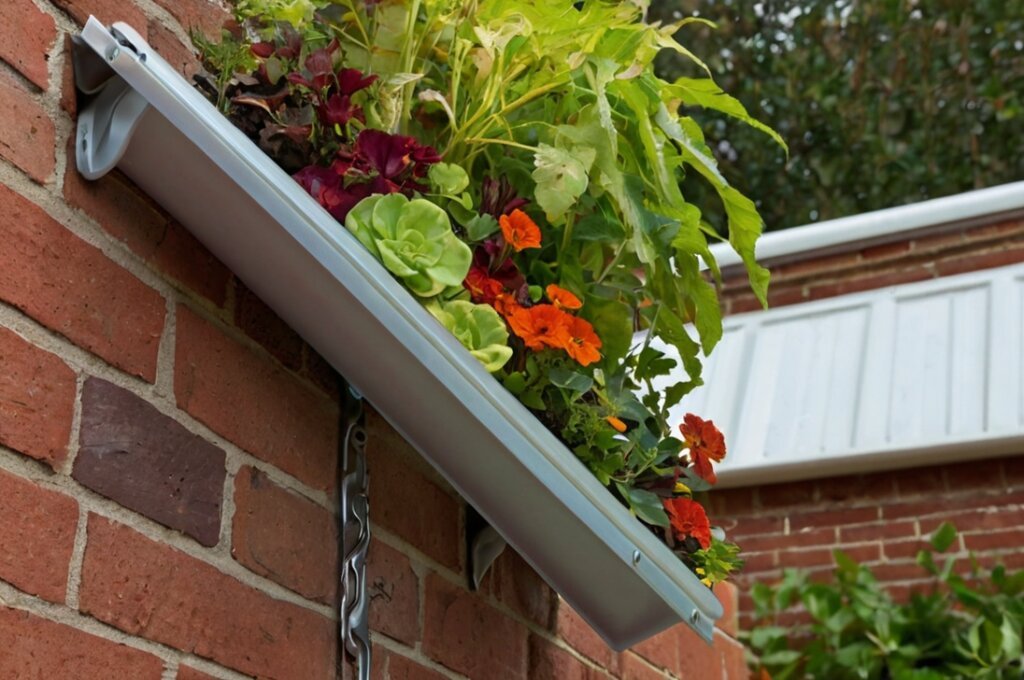
Propagating plants is one of the most rewarding experiences for any gardener.
Whether you’re starting seeds, rooting cuttings, or trying your hand at grafting, a greenhouse can make the process smoother and more successful.
But buying a ready-made greenhouse can be expensive, which is where the DIY route comes in.
Building your own greenhouse for propagation isn’t just cost-effective, it’s also a fun project that you can tailor to your specific needs.
Polycarbonate Greenhouses
Materials needed
Before we get started with the techniques, here’s a list of materials you’ll need for building a simple DIY greenhouse for propagation:
- PVC pipes or wood for the structure
- Clear plastic sheeting or polycarbonate panels for the cover
- Duct tape or staples to secure the cover
- Zip ties or pipe fittings to connect PVC pipes
- Shelving units or plant benches
- Thermometer and hygrometer to monitor temperature and humidity
- Fans or vents for airflow
- Grow lights (optional for indoor or low-light areas)
- Misting system or watering can
Step-by-Step: Polycarbonate greenhouses
Building a greenhouse doesn’t have to be complicated.
Follow these steps to create a functional space that suits your propagation needs:
Step 1: Build the frame
Start by constructing the frame using PVC pipes or wood.
For a basic design, you can create a simple hoop house using PVC pipes bent into arches and secured to the ground.
For a more permanent structure, wooden frames are sturdier but take more time and effort to assemble.
- Read also: Transform Your Garden: Easy DIY Greenhouse for Beginners
- Read also: DIY Greenhouse Trellis: Transform Your Garden Space
Step 2: Attach the covering
Cover the frame with clear plastic sheeting or polycarbonate panels.
Make sure the material is secured tightly to prevent heat loss.
Use duct tape or staples to hold the cover in place.
If using polycarbonate panels, screw them into the frame for better insulation.
Step 3: Add ventilation
Proper airflow is key to plant propagation.
Add vents or small fans to ensure good air circulation and to prevent mold or fungal growth.
Some DIYers use simple window vents, while others use solar-powered fans for extra efficiency.
Step 4: Set up shelves or benches
Inside the greenhouse, place shelves or plant benches for organizing your seed trays, cuttings, or grafted plants.
Make sure there is enough space for the plants to grow and for you to work comfortably.
Step 5: Control the environment
Install a thermometer and hygrometer to monitor the temperature and humidity inside the greenhouse.
You want to maintain a warm and humid environment, especially for delicate propagating techniques.
A misting system can help keep the humidity levels up, but if you don’t have one, you can use a watering can lightly mist the plants.

Container Greenhouse
Materials needed
Here’s a list of materials you’ll need for building a DIY container greenhouse for propagation:
- Container: Any plastic storage container with a lid, such as a large clear plastic storage box.
- Plant cuttings: Fresh cuttings from the desired plants.
- Sphagnum moss: Undyed long-fiber sphagnum moss helps retain moisture and support the cuttings.
- Water: To maintain humidity within the greenhouse.
- Perlite and premium potting mix (Optional): For additional stability and growth medium.
Step by step: Container greenhouse
Step 1: Prepare containers
Drill holes around the top of the container for ventilation if necessary.
Ensure good airflow to prevent mold formation.
Alternatively, use dessert cups inside the main container for separate plantings.
Step 2: Insert cuttings
Create holes in the sphagnum moss using fingers, chopsticks, or bamboo skewers.
Insert the plant cuttings into these holes.
Each cutting can go into its own container or multiple cuttings per container depending on spacing needs.
Step 3: Place in greenhouse
Put the filled containers into the prepared greenhouse.
Close the lid to trap warmth and humidity.
Step 4: Placement
Position the greenhouse in a bright, sunny area but avoid direct sunlight to prevent overheating.
Grow lights can substitute if natural light isn’t available.
Step 5: Maintenance
Regularly check the containers for moisture levels and refill as needed.
Add fresh water without disturbing the cuttings.

Alternative Greenhouse
Using recycled bottles
Cut a plastic bottle in half and place it over a small pot containing an individual cutting.
This creates a mini-greenhouse providing a controlled environment for microgreens and cuttings.
Using grocery bag
Use a clear plastic bag or white grocery bag to enclose the planted cuttings.
Secure with a rubber band.
Place in shaded areas and occasionally open for ventilation to prevent cooking of the plants.
- Read also: Upcycle Your Garden: Creative DIY Plant Stands from Pallets
- Read also: Eco-Friendly Gardening: DIY Planters from Plastic Containers
Conclusion
Building a DIY greenhouse for propagation is a rewarding and cost-effective way to grow your plants.
By following the step-by-step guide provided, you can create a controlled environment that will help your seedlings thrive.
With proper planning, construction, and maintenance, your homemade greenhouse will be a valuable asset to your gardening endeavors.
FAQs
Yes! A well-constructed greenhouse can be used year-round, especially if you include proper insulation and heating systems for colder months.
The watering needs will vary depending on the type of plants and the humidity levels in your greenhouse. Generally, check the soil regularly and water when it feels dry to the touch.
A DIY greenhouse helps create controlled temperatures and humidity levels, enhancing the growth rate of plant cuttings and improving their chances of successful propagation.



